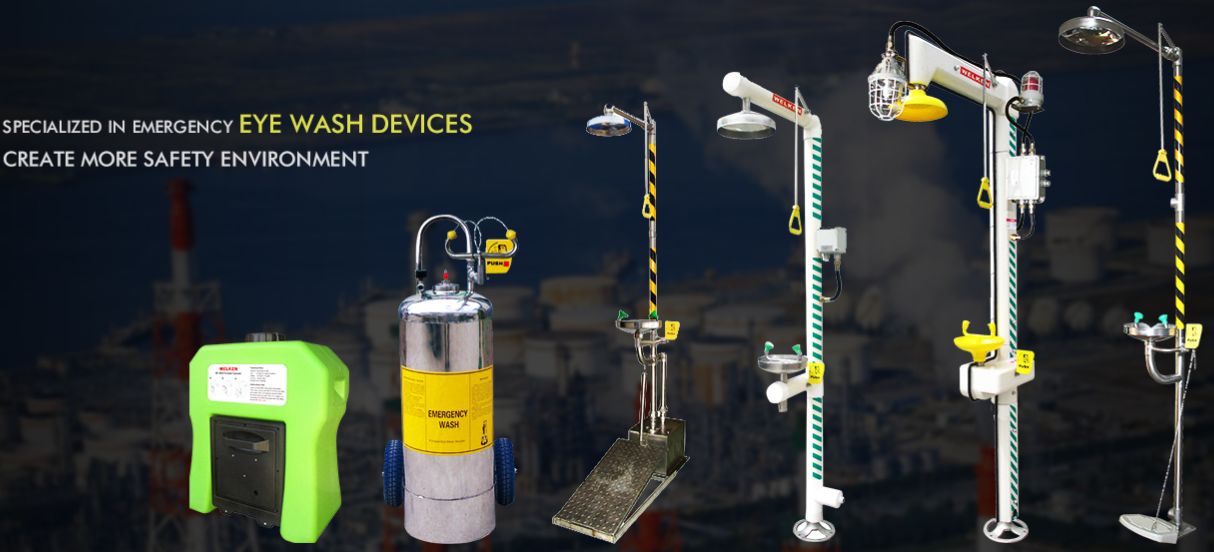There are many occupational hazards in production, such as poisoning, suffocation and chemical burns. In addition to improving safety awareness and taking preventive measures, companies must also master the necessary emergency response skills.
Chemical burns are the most common accidents, which are divided into chemical skin burns and chemical eye burns. Emergency measures must be taken after the accident, so the setting of emergency equipment eyewash is particularly important.
As the first aid equipment in the event of an accident, the eyewash device is set up to provide water for the first time to flush the eyes, face or body of the operator suffering from chemical sprays, and to reduce the possible harm caused by chemical substances. Whether flushing is timely and thorough is directly related to the severity and prognosis of the injury.
Especially companies that produce toxic or corrosive products need to be equipped with eyewash. Of course, metallurgy, coal mining, etc. also need to be equipped. It is clearly stipulated in the “Occupational Disease Prevention Law”
The general principles of eyewash setting:
1. The path from the source of danger to the eyewash must be free of obstacles and unobstructed. The device is installed within 10 seconds of the dangerous operation area.
2. Water pressure requirements: 0.2-0.6Mpa; punching flow ≥ 11.4 liters/minute, punching flow ≥ 75.7 liters/minute
3. When rinsing, you must open your eyes, turn your eyes from left to right, from top to bottom, and continue to rinse for more than 15 minutes to ensure that every part of the eye is rinsed.
4. The water temperature should not be 15~37℃, so as not to accelerate the reaction of chemical substances and cause accidents.
5. The water quality is clean and clear drinking water, and the effluent is foamy with a gentle and slow pressure principle, which will not cause secondary damage to the eye mask and inner nerves of the eyes due to excessive water flow.
6. When installing and designing the eyewash, considering that the waste water may contain harmful substances after use, the waste water needs to be recycled.
7. Executive standard: GB/T 38144.1-2019; in line with American ANSI Z358.1-2014 standard
8. There should be eye-catching signs around the eyewash to tell the job site personnel vividly about the location and purpose of the equipment.
9. The eyewash unit should be activated at least once a week to check whether it can operate normally and ensure that it can be used normally in an emergency.
10 In cold areas, it is recommended to use the empty antifreeze and electric heating type.
Post time: Aug-02-2024




